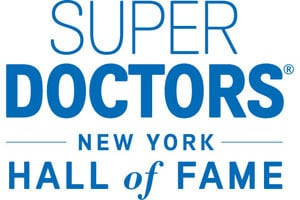
Living with seizure disorders is different for everyone. Children, adolescents, and adults experience various challenges, but thriving with a seizure disorder is possible. Recognizing the multiple symptoms of seizures can help you determine the type of seizure you may encounter, along with helpful tips on what to do if an episode occurs. Let's take a look at 6 most common types of seizures:
- Myoclonic Seizures: are brief, shock-like jerks of a muscle or a group of muscles. Most often, they don't last more than a second or two. There can be just one, but sometimes many will occur within a short time. After a myoclonic seizure, the individual usually continues doing whatever activity they were before and during the episode. They are awake and able to think clearly. No first aid is needed because of this seizure. Treating these seizures with medication is the most effective.
- Tonic-Clonic Seizure: also called a grand mal seizure. Usually, a grand mal seizure is caused by epilepsy. A tonic-clonic seizure causes a loss of consciousness and violent muscle contractions. It's the type of seizure most people think about when they think of seizures. Grand mal seizures usually last around one to three minutes, but in some cases, the episode can last longer than five minutes. If that's the case, it's considered a medical emergency, and you should call 911.
- Atonic Seizure: in an atonic seizure, muscles suddenly become limp. This type of generalized seizure is called a drop attack because your child may suddenly fall from a standing position or drop their head if already sitting. People may get injured when they fall. Head protection may be needed, such as a helmet or other protective gear. They occur in children but can last throughout adulthood.
- Simple Focal Seizures: also known as auras, occur in one area on one side of the brain but may spread from there. These seizures occur for a short time – typically lasting less than one minute. Symptoms can range depending on abnormal electrical brain function. Nausea, sweating, and looking pale are a few of the most common symptoms.
- Complex Focal Seizure:these seizures are often preceded by a simple focal seizure (aura). Patients experiencing a complex focal seizure may stare blankly into space. They will likely lose consciousness, and when consciousness returns, they may complain of being tired or sleepy. They last longer than simple focal seizures, with seizures lasting between one to two minutes.
- Absence Seizure:these are more common in children than in adults. Absence seizures involve brief, sudden lapses of consciousness. Afterward, the person won't be able to recall what just happened. Someone having an absence seizure may look like they are staring blankly into space for a few seconds. Some people have many episodes daily, which interfere with school or daily activities.
With the right therapy and knowing what to do in the event of a seizure, most people lead full, healthy lives. The symptoms of seizures vary by type. Treatment aims to reduce risk factors, manage symptoms, and prevent seizures from occurring again. By taking care of you and your loved ones' overall well-being and making lifestyle changes to lower the risk of seizures, you can live safely and healthily with a seizure disorder.
North Suffolk Neurology's Epilepsy & Seizure Specialist, Dr. Alan B. Ettinger, is devoted to assisting individuals with seizures and related disorders. We work with you to develop a unique personalized approach and provide you with the latest treatment options to manage your seizure disorder. For more information or appointments, please call (631) 346-9119 or visit www.northsuffolkneurology.com.
North Suffolk Neurology is a full-service Neurology, Headache Medicine, and Sleep Medicine practice. Our neurologists are board certified with a commitment to help patients and their families maintain and improve health.


